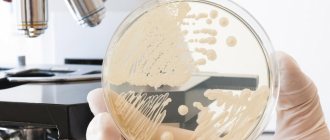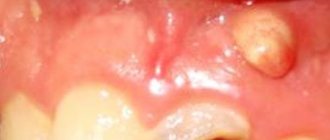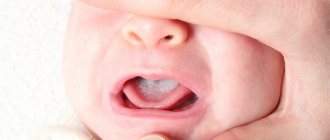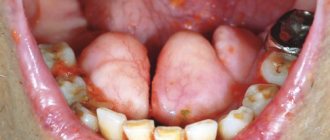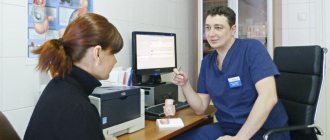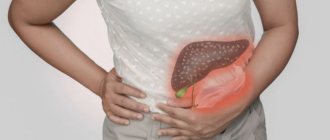Candidiasis of the oral mucosa - can often be found under the name “oral candidiasis” or “oral thrush”.
A disease that develops as a result of excessive proliferation of yeast-like fungi Candida, mainly Candida albicans.
Candida is considered an opportunistic pathogen.
It lives on the mucous membranes of healthy people and does not manifest itself in any way during normal functioning of the immune system.
When the immune system is disrupted and immunodeficiency develops, pathological conditions arise in the form of candidiasis.
With different localization: oral cavity, vagina, skin.
Most often, infants and people over 70 years of age suffer from candidiasis of the oral mucosa.
Candida albicans is an important opportunistic fungal agent in the human body and is found in both children and adults.
The interaction between C. albicans and its host is dynamic and complex.
This pathogen exhibits multifaceted strategies for growth, proliferation, and survival within the host.
Reacts to the slightest changes in the functioning of the immune system.
What is oral candidiasis? What caused it?
Oral candidiasis is a fungal infection caused by various types of fungus of the genus Candida.
These microorganisms are opportunistic, that is, they are constantly present in the human oral cavity without causing disease. Hormonal changes in the body, hypothermia, endocrine pathologies, and suppression of the body’s immune functions can activate the proliferation of the fungus and the development of the disease. Infants and the elderly are most susceptible to candidiasis: children's immunity is still developing, and the protective functions of the body of older people are often weakened by chronic diseases. Under the influence of specific substances secreted by the fungus, an immune response is generated in the body, which manifests itself in the form of an allergic reaction as damage to the oral mucosa.
Candida also has a range of enzymes that can invade and destroy human epithelial tissue cells.
Causes
The main cause of the disease is infection with the Candida fungus, an opportunistic pathogen that is widespread among humans and animals. Candida is a yeast-like unicellular fungus that is part of the normal microflora in a significant proportion of healthy people. Most often it can be found on the surface of various mucous membranes of the body, for example, in the intestines, mouth, pharynx and tonsils. Today, about 150 varieties of this microorganism are known, 20 of which are capable of causing diseases in humans. The destructive effect of Candida on the mucous membranes and other tissues of the human body is due to the release of a large number of enzymes that break down proteins, fats and other cell components. As a result of this, symptoms characteristic of candidiasis such as burning, dryness, and soreness occur.
When unfavorable conditions occur, Candida becomes covered with a special protective shell, which helps the fungus survive in the external environment and travel from host to host. Infection can occur in various ways - airborne, household contact, intrauterine. Newborn children are infected, as a rule, from medical personnel, or during childbirth, when passing through an infected birth canal.
At an early age, the child’s body does not have a developed immune system, if only for the simple reason that he has had virtually no contact with infectious agents and has not developed the appropriate antibodies. This is why children under one year of age are especially prone to developing candidiasis. However, this disease also occurs in older children. In this case, its appearance and development is often preceded by the formation of multiple carious lesions of the teeth. Caries, which is a constant source of infection, contributes to the weakening of local and general immunity, resulting in the rapid and active proliferation of opportunistic and pathogenic microflora. Various fungi of the genus Candida also fall into this category.
Factors that can provoke the development of candidiasis in a child’s mouth are also various concomitant diseases, such as diabetes mellitus, diseases of the gastrointestinal tract, acute or chronic infections, and other somatic ailments. Poor oral hygiene, taking antibiotics, hormones and immunosuppressants, and insufficient or unbalanced nutrition also increase the risk of developing candidiasis.
For active reproduction of the fungus, certain conditions are necessary - in particular, this microorganism is most active at temperatures from 30 to 37 degrees Celsius. The level of acidity that is optimal for the growth of Candida occurs in a person’s mouth when consuming large amounts of sweets, flour and other foods containing many simple carbohydrates.
What does candidiasis look like?
Common symptoms of candidiasis are redness of the oral mucosa, swelling, a white coated tongue, dry mouth, and rashes in the mouth that look like semolina. Sores may appear in the corners of the lips. If candida has moved to the mucous membrane of the pharynx, a cheesy coating on the tonsils may be visible. With candidiasis, a person feels pain when eating, talking, burning, tingling and dry mouth.
The disease can manifest itself in different ways and occur in several forms.
Acute pseudomembranous candidiasis, also known as thrush
More common in children than in adults. A newborn baby can become infected with candidiasis from the mother, passing through the birth canal, as well as during breastfeeding. Older children whose immunity is weakened by long-term infectious diseases are susceptible to the incidence of thrush. Also, “thrush” occurs against the background of hypovitaminosis, endocrine diseases, and long-term use of antibiotics. On the mucous membrane of the tongue, palate and cheeks, white point growths form, merging into spots that have a cheesy appearance. The mucous membrane of the oral cavity is bright in color, and dry mouth is observed. The child’s tongue is often coated, swollen, and the tongue papillae are enlarged. The child may refuse to eat, complain of discomfort, tingling and itching in the mouth. If you do not consult a doctor in time, the process spreads throughout the body and is accompanied by an increase in body temperature.
Mycotic jam
There are cracks in the corners of the mouth covered with plaque or crusts. Sometimes the process spreads to the lips, they acquire a bright shade and are covered with gray scales. Candida cheilitis develops. There is a burning and tingling sensation in this area, pain when eating, opening the mouth, and when smiling. Pathology often occurs in older people with pathological changes in bite.
Chronic and acute atrophic candidiasis
White plaque can be seen on the sides of the tongue and in the deep folds of the mouth. The tongue has a crimson tint and a shiny surface, the papillae of the tongue are smoothed. The corners of the mouth may be affected. Usually occurs in people who use removable orthopedic structures for a long time. This form of candidiasis can either appear suddenly or bother the patient for a long time.
Chronic hyperplastic candidiasis
The mucous membrane of the oral cavity is red. There is a large amount of whitish-gray coating on the tongue and palate, and yellow-gray films are sometimes observed. The surface of the palate often becomes lumpy. You feel dry mouth and pain when eating.
Symptoms of oral thrush
At the beginning of the development of the infectious process, pathogenic agents penetrate the mucosal cells, multiplying and secreting enzymes.
Against the background of such microorganism activity, redness of the oral mucosa develops.
Increased dryness, burning sensation, and pain occur.
During active reproduction, yeast-like fungi form threads of elongated cells (pseudomycelia).
There is an abundant accumulation of light plaque with a cheesy consistency.
At first, the signs of the disease are weak, the plaque is not pronounced.
A small accumulation of grains can be seen on the oral mucosa.
Gradually, as the amount of the pathogenic agent increases, the grains turn into plaque, and a little later plaques form.
Initially, they are localized on the cheeks, later they spread to the palate, tongue and nasopharynx.
In the initial stages of the disease, plaque can be easily removed with a cotton swab.
After its removal, the surface of the mucous membrane has slight redness, and small, single ulcers may develop.
The visual clinical picture is accompanied by the appearance of itching and discomfort during eating.
Symptoms are aggravated by eating hot, spicy and salty foods.
Body temperature may rise slightly against the background of an ongoing infectious and inflammatory process.
Additionally, other dental diseases may occur - stomatitis, inflammation of the gums and tongue, cheilosis.
How to treat candidiasis?
If you find signs of candidiasis, first consult a dentist. He will examine the oral cavity and determine what could have caused the onset of the disease.
Next, the dentist will prescribe topical products with antifungal and analgesic effects. To confirm the diagnosis, biological material is collected from the oral mucosa and then sent to the laboratory for culture. This is necessary to confirm the diagnosis.
If the dentist suspects that the patient has a pathology that could provoke the development of candidiasis, he is redirected to a specialist of the appropriate profile. Treatment of the underlying disease is necessary in order to avoid future recurrences of fungal infection.
Diagnostic measures
To confirm the diagnosis and prescribe adequate and effective treatment, the patient is prescribed a series of tests.
The initial examination is carried out by a dentist.
If necessary, the specialist refers the patient to other highly specialized doctors to determine the cause of the pathology.
In case of oral candidiasis, it is important to exclude esophageal thrush; for this purpose, the following tests are prescribed:
- A smear of the pharyngeal mucosa for subsequent bacteriological examination (culture for candida).
- Endoscopic examination of the gastrointestinal tract.
- X-ray diagnostics with a contrast agent.
Treatment of candidiasis: recommendations for the patient
During treatment, it is recommended not to temporarily use removable dentures. If there is a need to wear removable orthopedic structures every day, it is recommended to regularly treat them with the same antiseptics as the oral cavity. Also, a sick person will have to reconsider his diet. Foods high in carbohydrates, starch and sugar promote the growth of Candida fungus. They create an environment in the oral cavity that is favorable for the proliferation of the pathogen. For a speedy recovery, it is advisable to adhere to a healthy diet and drink plenty of water.
Perform oral hygiene after every meal. Follow all doctor's recommendations, rinse your mouth regularly and use only the medications prescribed by your doctor. If the white coating does not come off from your tongue or cheeks, do not try to remove it yourself. You can injure the mucous membrane of the oral cavity, as a result of which the causative agent of candidiasis will enter the bloodstream and the infection will spread throughout the body.
Features of therapy
Instructions for use
Treatment for thrush should begin immediately after the diagnosis is made.
To get rid of candidiasis in a child’s mouth using Candida, you will need to take a cotton swab, drop 3-4 drops of solution on it and lubricate the affected areas of the mucous membrane. It is recommended to remove white plaque after feeding, three times a day. The baby’s mouth should be treated continuously for a week, but the first improvements are observed already on the 3rd day.
Vaginal tablets can cure thrush in women. To do this, you will need to lie on your back, bend your knees and insert the medicine deep into the vagina. The dosage is determined by the attending physician, but is usually 500 mg 1 time before bedtime. “Candide” in powder form is applied to the problem area of the skin 3-4 times a day. In order for the therapeutic course to give the most positive results, it is important to carry out procedures regularly and not stop treatment after the disappearance of painful symptoms.
Candidiasis: disease prevention
The Candida fungus can live in the carious cavities of diseased teeth and in untreated dental canals. Sometimes it is localized in microscopic cracks on ceramic prostheses and under them, covering plastic orthopedic structures. To prevent the development of candidiasis, it is recommended to carry out high-quality sanitation of the oral cavity and promptly replace outdated bridges and crowns.
Avoid self-medication. Incorrectly selected drug therapy can provoke a state of dysbiosis, as a result of which the number of “beneficial” microflora in the body decreases, and pathogenic ones, such as candidiasis pathogens, increase.
If there is a small child in the house, try to adhere to the rules of hygienic child care. Avoid hypothermia, stressful situations, maintain a normal sleep schedule to prevent a decrease in immunity.
Contraindications and adverse reactions
Candide is not prescribed to cure thrush in patients with hypersensitivity to the components. The medicine is not suitable for women during menstruation and the first trimester of pregnancy. Nursing mothers can use Candide to combat thrush only with extreme caution, starting with small doses and observing the child’s reaction. Negative effects when using Candida occur extremely rarely, but patients may still experience local irritation, burning, itching or swelling of the mucous membrane. Patients reported headaches, increased vaginal discharge, and increased urination.
Read more about thrush on the website: etogribok.ru/
How to cure tooth decay without a dentist
It is believed that it is impossible to cure a tooth affected by caries without visiting a dentist. But only if it is not caries at the chalk spot stage - this is the initial stage of caries, when calcium is washed out of the tooth enamel. At this moment, the tooth is most susceptible to attack by cariogenic bacteria. But the damage can still be stopped without visiting the dentist.
For example, using remineralizing gels. They contain all the necessary minerals that fill the washed areas: for example, in Tooth Mousse, casein performs this function. This way the tooth regains its original appearance and receives additional protection from carious formations.
Even if a child, at first glance, does not have caries, the gel can be used for prevention.
Gel for strengthening teeth ROCS (ROCS) Medical Minerals with tuber flavor…
Gel for strengthening teeth ROCS (ROCS) Medical Minerals with fruit flavor…
Tooth gel GC Tooth Mousse Strawberry
Tooth gel GC Tooth Mousse Multifruit
